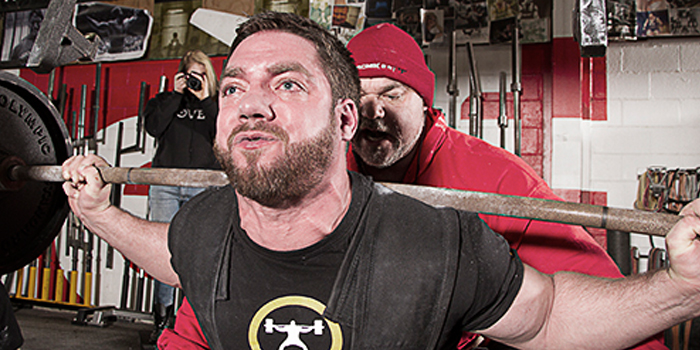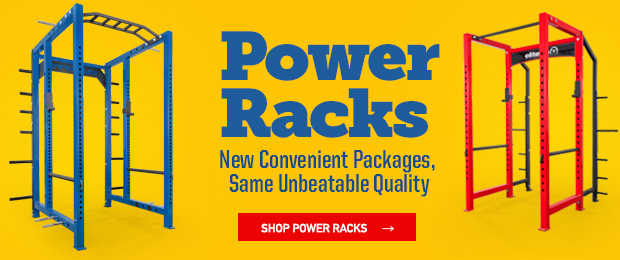
Evaluating “sticking points” in a lift can be tricky, and a common concern with lifters is their strength off the chest in the bench press. For example, recently one of our readers asked the following question in our Q&A:
“What is a good way to build strength off the chest as a raw powerlifter? I can lock out everything, [my] board presses and floor presses are 35lbs heavier than my bench max and with 19-inch arms, I don't think my triceps strength is lacking.
However I can't do a full ROM bench to save my life. What's a good way to address this issue?”
Anytime you look at a sticking point or mini-max (in this lifter’s case, right off the chest), the cause can be physical, mental, or technical (something Dave Tate has talked about at length). But even going further, each of those causes can have multiple layers of their own. Without seeing video of this lifter’s bench, or getting additional information, it’s hard to make a judgement on the mental or technical components, so we’ll focus on the physical ones in this article.
When I first began lifting, if someone asked about getting stronger off the chest, I probably would have had a very one-dimensional answer like “just pause bench.” Over time, however, I’ve seen how important it is to attack weaknesses from every possible angle.
Before we go any further, anytime someone is weak in the bottom of a lift, one simple possibility is that the weight is just too heavy. This is where taking a look at the person’s program becomes important. If they’re just trying to max out on their competition bench every week and are getting burnt out, they may need to use more submaximal work to help develop their strength. If you’ve tried benching a weight three weeks in a row and every time you get stapled on your chest, you may just not be strong enough to lift that weight yet.
Beyond the weight being too heavy, there are a few different physical components of training that, if you work at them, will help the barbell fly off your chest next time you test your max.
Chest and Shoulder Strength
This is the obvious one. Sometimes we can get so caught up in different training strategies and special exercises that we forget the importance of just developing strength for the chest and shoulders to press with. There are many different max effort and repetition effort exercises to develop this, with some of the most popular being:
1. Dumbbell Bench
These can be done on a flat bench or incline, and are typically best suited for assistance work in different rep ranges. Different variations include doing paused presses or floor presses, and these can also be used for lighter reps before speed bench as a warm-up.
2. Incline Bench
There are also many different ways to perform this movement, but many lifters find success in using a moderate or close grip (both to protect the shoulders and make the movement more difficult/utilize triceps). This can be used as a max effort movement, but is commonly used as a supplemental “builder” exercise following the main movement, and can be used as a high rep accessory exercise as well. Different bars can be used for this movement as well, with the swiss bar being a common choice to further alleviate pressure from the shoulders.
3. Pause Bench
This is another movement that can be done for max effort or as a supplemental exercise. Variations include close grip paused bench, Spoto presses (pausing right before the bar touches your chest), and paused floor press. Many people consider floor press as working the top end of the bench (which it does), but using a pause on the floor and breaking up the eccentric and concentric parts of the movement can develop great starting strength off the chest.
Upper Back Development and Strength
This is a component that has been emphasized by some of the top benchers in powerlifting, but still gets neglected by both beginners and even many intermediate lifters as well. A strong and developed upper back is incredibly important in building a big bench. In terms of strength off the chest, if you don’t have a good shelf (namely your lats and traps) to support your bench, you will collapse as soon as the bar reaches your chest. A big, strong upper back will help you to control your bar path, and drive off the chest for the press.
Movements to help in developing these muscles include:
1. Cable Row Variations
The diversity of cable attachments gives you plenty of options for these movements. A combination of lat pulldowns, mid-back shrugs, and rows in the plane of the bench press (and using a bench grip on a lat pulldown bar) can all help with developing your upper back. Something I’ve heard for a long time has been to “train your bench like a powerlifter, and your back like a bodybuilder” and I think there’s a lot of merit to that. Using light weight and focusing on the movement of the shoulder blades (depressing and retracting), using different tempos, and various intensity techniques can help you get more out of light weights and blow up your back.
2. Reverse Band Rows
This is a great movement because it also allows you extra work at staying tight in your bench position and replicates your bench movement.
3. Dumbbell Rows
These are great because they can be done in a way that supports the lower back (with the knee on the bench or a staggered stance) so it doesn’t over-tax your low back on your upper body days. You can also position yourself in way that allows you to get a great range of motion and strength for the lats, and really work on movement of the shoulder blades.
Explosiveness
This is another component of benching off the chest that many lifters don’t consider in their training. If you have a “sticking point” a few inches off the chest, what do you think is the best way to break through it, slow or fast? Developing the ability to drive quickly off the chest will carry you through sticking points and help utilize the strength you have to its full potential. Dynamic effort benching can be done with straight weight, but is commonly used with accommodating resistance like bands or chains because it further emphasizes the importance of accelerating the bar as quickly as possible and accommodates the strength curve of the bench. For speed bench, you want to lower the bar as quickly as possible while still maintaining tightness and a correct bar path (not doing so is an injury waiting to happen). Then once the bar reaches the chest, explode up in a straight line as quickly as possible. How speed bench is utilized in your training will depend on your program. If you train in a conjugate (or concurrent) system, you will have a dynamic effort day for this. If you train in a different type of program, speed work can be done after the main bench sets or before, depending on your program.
These are a few important components of building a big bench, starting with getting the bar off your chest as quickly and efficiently as possible. Always remember that sticking points can be from different causes, and those causes can each have layers of their own. As you gain more experience, you’ll become better and better at evaluating your weaknesses and finding the best ways to blow past them.











Big fan of the floor press myself. I love it because it allows for no room for cheating at all. There is no way to bounce it off your chest or really use the spring in your back. super good for really just isolating on the triceps and chest.
One resource that helped me a ton was actually a program called critical bench. It is chalk full of tips and tricks that you wouldn't really think of that actually make a huge difference in your bench when implemented correctly.